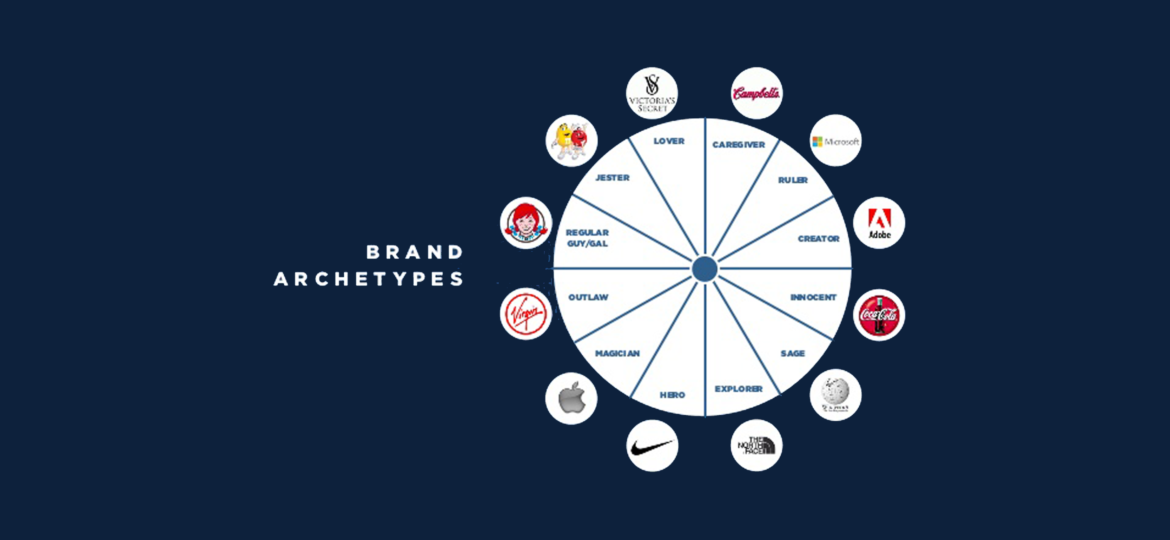
Psssst: What’s your archetype? No, not your “type” (tall blonde and handsome?) or your “astrological sign”(PS. I’m a Gemini)… what’s your archetype? If you don’t know (it’s ok if you don’t), this may explain why there is a gap between how you are trying to position yourselves in the marketplace and how customers are responding to you.
The first time I sat at the table with AT&T’s C-level leadership team, I thought we were going to discuss building an impactful new channel marketing program (one of the first in the world, I might add). Instead, the CEO slid a book to me called “The Hero and The Outlaw” and said to me “Read this. And when you’re done, we’ll proceed.” After reading the book, I realized that the principle gut instincts I had for years were finally validated. Countless studies drawn from the experiences of powerhouse brands like Coca Cola and Nike and their successes directly correspond to fundamental patterns in the unconscious mind – archetypes.
How do archetypes fit into my brand positioning?
In brand positioning, the subject of archetypes is ever-present. You’ve paid top dollar for all of your marketing to be produced in a silo, and it worked for a while – maybe a year or even years – but now, your customers just don’t seem to “get” what you’re doing. They don’t understand your message and you’re spending loads of time in a sales cycle with your prospects to try to “get” them to understand. You’ve packaged your products and services and crafted the messaging without considering what your target market needs or how your personas evaluate, respond to information and eventually decide to buy.

We don’t really need to speculate the cause to pinpoint the effect that a lack of identity is having on your business. The bottom line is, when you strip out all of the glitz and glamor of the tactical components of your marketing, and even your marketing plan, defining who you are, authentically as a brand, must be in alignment with your target market personas.
Wow. That’s pretty nerdy, right? Well, here’s an overview of how this affects you – and how you can fix it.
Is the relationship broken between archetypes and personas?
So, yes, your archetypes must be compatible with your target market’s personas – all of them. In order to control and foster this relationship, you must first define, authentically who you are as a brand, and then determine how to refine your messaging as a whole, then customize and align it to each of the personas.
YOU
Corporate restructuring turn-around firm.
Archetype: Jester
YOUR PERSONAS
Lawyers, accountants, CFOs and CTOs.
Their needs: respond well to information that seems to be factually and thoroughly presented; values your ability to solve complex problems – even “on the fly”.
How well do you think your target market personas would respond to your brand if you were a Jester?
Do you think they would like a lighthearted approach to the “facts”?
I’d venture to say that a Jester message would be difficult to tailor to a (likely) Sage audience. Making light of a situation where the company’s staff and leadership are undergoing professional and personal turmoil may not be the best approach. But, if being a Jester is authentically who you are, we’ve got some work to do to help you steer clear of alienating and offending your audience.
What’s next?
Take an inventory of your activities and what elements you have the presently define and structure who you are, what you do, and why you do it. Does it include any or all of the following?
• Mission statement, and loads of materials that you thought defined your brand: a logo, your own brand colors and a style guide.
• CRM and/or PRM, and even marketing automation tools for email or inbound marketing.
• Really slick website with blogs for “thought leadership”.
• Personas that define your target market’s decision makers or influencers, potential channel marketing partners or even investors.
• Go-to-market strategy with what and how you are going to build a sales funnel.
• Social media profiles for practically everything
• Agency on contract, “a guy” or an intern that manages your online advertising, SEO and social media, where you post lots of stories that may or may not get a “like”.
Yeah. While all of the above are important, none of the above will be able to sustain your business if they don’t consistently reflect your archetypes. So, it may be time to reevaluate the inventory of activities and assets you are doing.
Reestablish your archetypes and brand positioning
Take a look at what is working and what isn’t. Then, go back and take a closer look- do your activities and assets reflect who you are, authentically as a brand – not “what” or “how” you do something, but do they reflect your “why”? Now, look at the sum of the parts? Do all of your activities and assets consistently and cohesively reflect your archetypes? Your tone of voice in your copywriting, your images, the color, your thought leadership strategy, and more all need to be portraying the same archetypes. That’s why we’re here.
Let us know how you have worked to align your archetypes to your personas. We’d love to hear from you. And when you’re ready for help with your brand positioning, contact us to see how we can help you align who you are with your customer’s needs and build one helluva competitive advantage.
PS. Luckily for all of us, Carol Pearson and Margaret Mark has spent years researching this very premise and co-authored a best selling book called “The Hero and The Outlaw” to further define this premise. If you don’t know it, get it. Seriously. You need to know who you are, authentically, so that you can be consistent in how you present yourself in all facets of your business – internally and externally.


